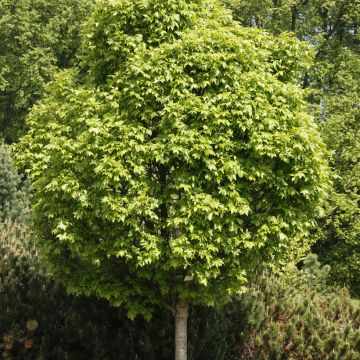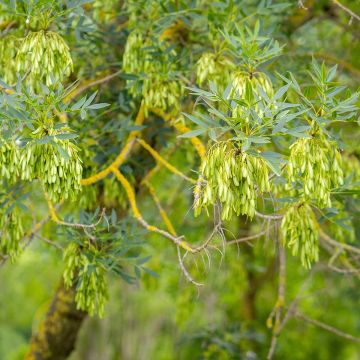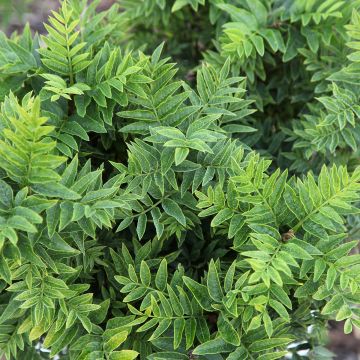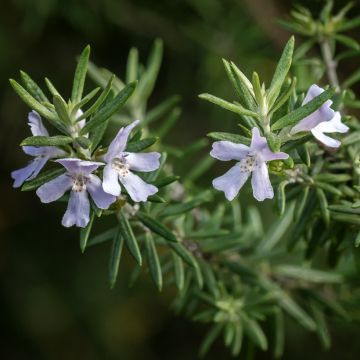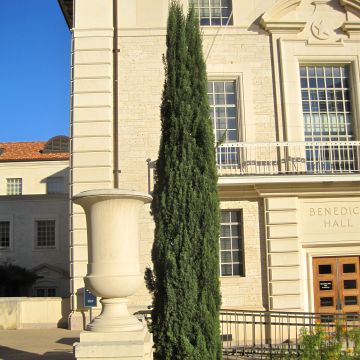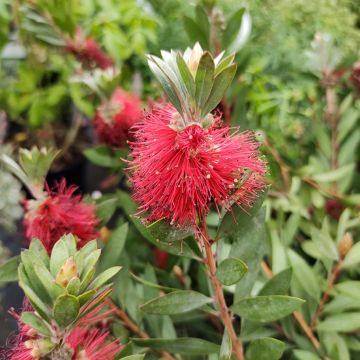

Fraxinus ornus Mecsek - Manna ash
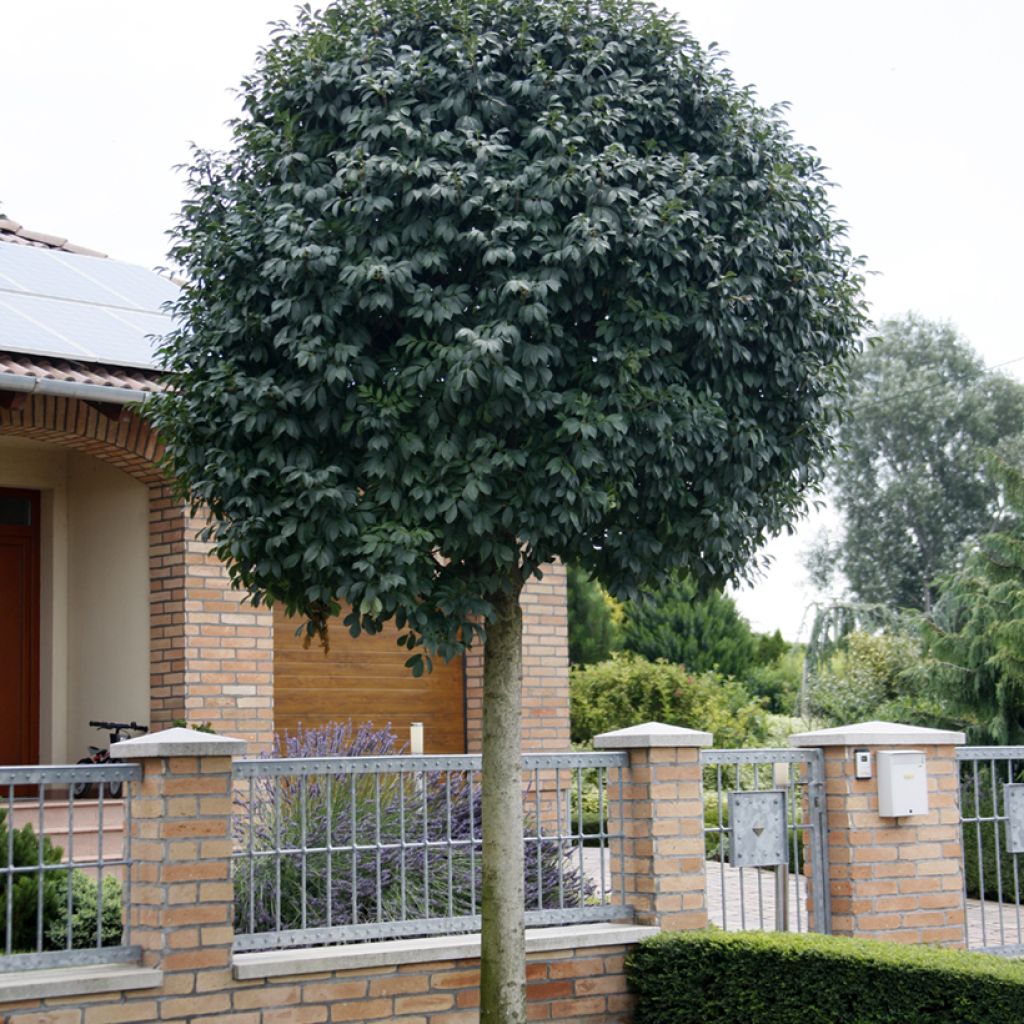

Fraxinus ornus Mecsek - Manna ash
Fraxinus ornus Mecsek - Manna ash
Fraxinus ornus Meczek
Manna ash
This item cannot be shipped to the selected country
Oversize package delivery charge from €6.90
More information
Schedule delivery date,
and select date in basket
This plant carries a 24 months recovery warranty
More information
We guarantee the quality of our plants for a full growing cycle, and will replace at our expense any plant that fails to recover under normal climatic and planting conditions.
Oversize package: home delivery by special carrier from €6.90 per order..
Express home delivery from €8.90.
Does this plant fit my garden?
Set up your Plantfit profile →
Description
Fraxinus ornus 'Mecsek' is a Flowering Ash or Manna Ash grafted on a stem, interesting for its small size and its "ball" crown. Desirable characteristics for decorating a small garden. Often used in rows, this small deciduous tree also offers honey-scented spring flowering and beautiful autumn colours. Resistant to cold and drought, comfortable in limestone soils, this ash tree is easy to grow. It is particularly suitable for Mediterranean climates.
The Flowering Ash, also known as Manne Ash or European Manna Ash, is a tree from the olive family, just like the olive tree and lilac. It is native to southern Europe and western Asia. Its habitat is arid limestone hills. Its cream-white flowering is fragrant and nectar-rich.
The cultivar 'Mecsek' was discovered in 1980 in the Mecsek mountain range in Hungary. The tree has a taller or shorter grafting stock that will become its trunk. It is covered with a smooth, grey bark that becomes anthracite grey over time. Its grafted crown is almost spherical, slightly flattened. Eventually, it can reach a span of 3 to 4 metres. The deciduous foliage consists of leaves measuring 20 to 30 cm long, composed of 5 to 9 leaflets, each measuring 5 to 10 cm long and 2 to 4 cm wide. These fairly dark green and slightly glossy leaflets have a finely toothed and wavy edge. Depending on the climate, they turn yellow or even orange, pinkish-purple in autumn. The large buds of the flowering ash are dark and ashy in colour. Flowering occurs in May, at the tips of the branches, on the foliage. It takes the form of upright, feathery, well-filled, fragrant panicles measuring 10 to 20 cm long. Each flower, which does not exceed 5-6 mm in length, has 4 cream-white petals. This variety bears little fruit. After pollination, a few clusters of fruits called samaras measuring 2 to 4.5 cm long are formed. Their colour varies from coppery red to light brown and provides an additional ornamentation at the end of the season.
The name "manna ash" comes from the fact that the sweet and syrupy sap of this tree can be harvested after cutting the bark. Called "apothecary's manna," it is still used in herbal medicine for its purgative and diuretic properties.
The 'Mecsek' flowering ash is a small tree with a clean appearance that thrives with very little care. As a solitary specimen, its "ball" shape and fragrant spring flowering make it an ornamental subject. This small tree will find its place in gardens of all sizes, especially as a shade tree near a terrace. Two trees can also be planted to frame the entrance of the garden or placed in the centre of a rounded flower bed. In this use, spring bulbs, ground cover roses, or lavender, for example, can be planted at its base.
Report an error about the product description
Fraxinus ornus Mecsek - Manna ash in pictures


Plant habit
Flowering
Foliage
Safety measures
Botanical data
Fraxinus
ornus
Meczek
Oleaceae
Manna ash
Eastern Europe
atteinterespiratoire
Cette plante peut entraîner des symptômes allergiques.
Evitez de la planter si vous ou vos proches souffrez de rhinite saisonnière ("rhume des foins").
Davantage d'informations sur https://plantes-risque.info
Other Fraxinus - Ash tree
Planting and care
Plant your Fraxinus ornus 'Mecsek' in autumn or early spring, choose an open location in full sun, and keep in mind the space it will take up in the long term. In the south, some afternoon shade is tolerated. If necessary, create a drainage pit with rocks if your soil is very clayey and suffocating. If your soil is very poor, a generous addition of leaf compost will be beneficial. Maintain regular watering during the summer following planting and make sure to protect it from prolonged droughts for another year, mulching can help keep the base moist and space out watering. Once well established, this ash tree is resistant to summer drought. It is resistant to frost and wind, tolerates salt spray, and adapts well to limestone soils. Pruning is well tolerated in winter.
This is one of the species of ash tree most resistant to ash dieback (Chalara fraxinea), a fungal disease that causes these trees to wither.
Planting period
Intended location
Care
This item has not been reviewed yet - be the first to leave a review about it.
Mediterranean shrubs
Haven't found what you were looking for?
Hardiness is the lowest winter temperature a plant can endure without suffering serious damage or even dying. However, hardiness is affected by location (a sheltered area, such as a patio), protection (winter cover) and soil type (hardiness is improved by well-drained soil).

Photo Sharing Terms & Conditions
In order to encourage gardeners to interact and share their experiences, Promesse de fleurs offers various media enabling content to be uploaded onto its Site - in particular via the ‘Photo sharing’ module.
The User agrees to refrain from:
- Posting any content that is illegal, prejudicial, insulting, racist, inciteful to hatred, revisionist, contrary to public decency, that infringes on privacy or on the privacy rights of third parties, in particular the publicity rights of persons and goods, intellectual property rights, or the right to privacy.
- Submitting content on behalf of a third party;
- Impersonate the identity of a third party and/or publish any personal information about a third party;
In general, the User undertakes to refrain from any unethical behaviour.
All Content (in particular text, comments, files, images, photos, videos, creative works, etc.), which may be subject to property or intellectual property rights, image or other private rights, shall remain the property of the User, subject to the limited rights granted by the terms of the licence granted by Promesse de fleurs as stated below. Users are at liberty to publish or not to publish such Content on the Site, notably via the ‘Photo Sharing’ facility, and accept that this Content shall be made public and freely accessible, notably on the Internet.
Users further acknowledge, undertake to have ,and guarantee that they hold all necessary rights and permissions to publish such material on the Site, in particular with regard to the legislation in force pertaining to any privacy, property, intellectual property, image, or contractual rights, or rights of any other nature. By publishing such Content on the Site, Users acknowledge accepting full liability as publishers of the Content within the meaning of the law, and grant Promesse de fleurs, free of charge, an inclusive, worldwide licence for the said Content for the entire duration of its publication, including all reproduction, representation, up/downloading, displaying, performing, transmission, and storage rights.
Users also grant permission for their name to be linked to the Content and accept that this link may not always be made available.
By engaging in posting material, Users consent to their Content becoming automatically accessible on the Internet, in particular on other sites and/or blogs and/or web pages of the Promesse de fleurs site, including in particular social pages and the Promesse de fleurs catalogue.
Users may secure the removal of entrusted content free of charge by issuing a simple request via our contact form.
The flowering period indicated on our website applies to countries and regions located in USDA zone 8 (France, the United Kingdom, Ireland, the Netherlands, etc.)
It will vary according to where you live:
- In zones 9 to 10 (Italy, Spain, Greece, etc.), flowering will occur about 2 to 4 weeks earlier.
- In zones 6 to 7 (Germany, Poland, Slovenia, and lower mountainous regions), flowering will be delayed by 2 to 3 weeks.
- In zone 5 (Central Europe, Scandinavia), blooming will be delayed by 3 to 5 weeks.
In temperate climates, pruning of spring-flowering shrubs (forsythia, spireas, etc.) should be done just after flowering.
Pruning of summer-flowering shrubs (Indian Lilac, Perovskia, etc.) can be done in winter or spring.
In cold regions as well as with frost-sensitive plants, avoid pruning too early when severe frosts may still occur.
The planting period indicated on our website applies to countries and regions located in USDA zone 8 (France, United Kingdom, Ireland, Netherlands).
It will vary according to where you live:
- In Mediterranean zones (Marseille, Madrid, Milan, etc.), autumn and winter are the best planting periods.
- In continental zones (Strasbourg, Munich, Vienna, etc.), delay planting by 2 to 3 weeks in spring and bring it forward by 2 to 4 weeks in autumn.
- In mountainous regions (the Alps, Pyrenees, Carpathians, etc.), it is best to plant in late spring (May-June) or late summer (August-September).
The harvesting period indicated on our website applies to countries and regions in USDA zone 8 (France, England, Ireland, the Netherlands).
In colder areas (Scandinavia, Poland, Austria...) fruit and vegetable harvests are likely to be delayed by 3-4 weeks.
In warmer areas (Italy, Spain, Greece, etc.), harvesting will probably take place earlier, depending on weather conditions.
The sowing periods indicated on our website apply to countries and regions within USDA Zone 8 (France, UK, Ireland, Netherlands).
In colder areas (Scandinavia, Poland, Austria...), delay any outdoor sowing by 3-4 weeks, or sow under glass.
In warmer climes (Italy, Spain, Greece, etc.), bring outdoor sowing forward by a few weeks.


































